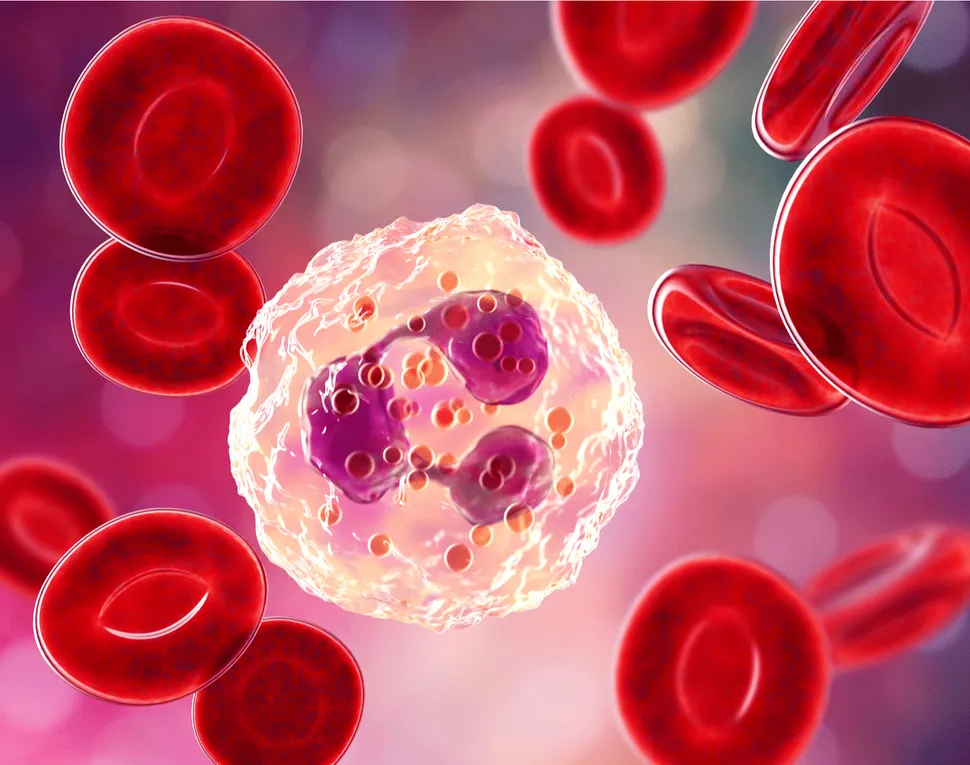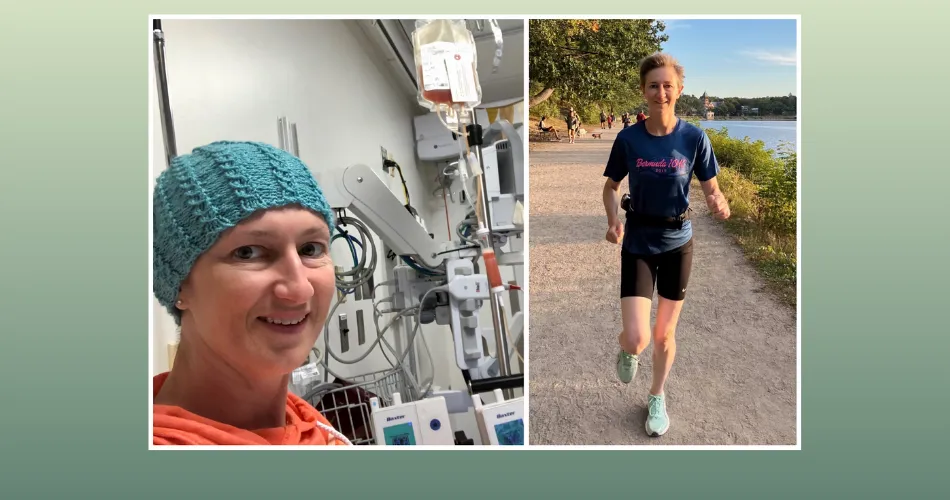Romyelocel-L: An Immune Cell Treatment Shown to Prevent Infections in AML Patients

According to a phase 2 trial published in the Journal of Clinical Oncology, a drug called Romyelocel-L is a treatment of ready-made human immune cells that has been shown to provide neutrophil support and prevent infections in AML patients who have weakened immune systems as a result of their induction chemotherapy treatment.
Romyelocel-L works to combat the serious infections that result as a side effect of cytarabine and other chemotherapy induction regimens used as the standard of care for many people with AML. Neutropenic fever occurs in 80% of patients who receive induction chemotherapy and infections occur in 50-60% of patients. Complications from infections are the leading cause of death from AML induction chemotherapy, so it is of vital importance to find ways to reduce the risk of infection in these patients. The development of Roymelocel-L aims to address this unmet need by providing more of a proactive approach to infection prevention instead of just treating infections with antibiotics after they have occurred.
Infusion of Romyelocel-L boosts the presence of neutrophils, an important white blood cell that fights off bacterial and fungal infections. Neutrophils are usually wiped out as a result of chemotherapy, making the patient immunocompromised. Romyelocel-L works to replenish the lost neutrophils. In the prior phase 1 trial, Romyelocel-L was found to make functional neutrophils around 6 days after infusion and demonstrated an acceptable safety profile.
A Look at the Phase 2 Trial
The phase 2 trial looked at Romyelocel-L in combination with granulocyte colony-stimulating factor (G-CSF) vs G-CSF alone in AML patients receiving induction chemotherapy. Currently, G-CSF is approved for use to improve neutrophil counts in adult AML patients following induction chemotherapy. However, the benefit of administering G-CSF alone during induction in AML patients is unclear and studies have failed to show their benefit for a reduction in infection, antibiotic use and overall survival. In the phase 2 study, the Romyelocel-L + G-CSF group received infusions on day 9,10 or 11 of their induction chemotherapy cycle.
Results showed that although there was not a statistically significant difference in febrile episodes between the two groups, the Romyelocel-L with G-CSF group demonstrated less infections, less antibiotic use and shorter hospital stays than the G-CSF group.
Study Results:
|
Measures |
Romyelocel-L + G-CSF Group |
G-CSF Group |
|
Infections |
6.8% |
27.9% |
|
Use of IDSA group 2 antibacterials |
30.5% |
45.9% |
|
Average hospital stay |
25.5 days |
28.7 days |
Conclusions
The authors discuss that the use of Romyelocel-L could reduce the use, duration and escalation of antibiotics, ultimately leading to shorter hospital stays and an improved quality of life for AML patients. The use of Romyelocel-L could also make induction chemotherapy for AML more widely available to older patients who might not have otherwise been able to receive this treatment due to a high risk of serious infection. The authors conclude their study by stating, “As infection remains the most common cause of morbidity and mortality in patients with AML, strategies to reduce the risk of infection are an unmet need. These results provide the foundation for a phase 3 trial with the primary endpoint of reduction in infections during intensive induction chemotherapy for adults with AML.”
According to a phase 2 trial published in the Journal of Clinical Oncology, a drug called Romyelocel-L is a treatment of ready-made human immune cells that has been shown to provide neutrophil support and prevent infections in AML patients who have weakened immune systems as a result of their induction chemotherapy treatment.
Romyelocel-L works to combat the serious infections that result as a side effect of cytarabine and other chemotherapy induction regimens used as the standard of care for many people with AML. Neutropenic fever occurs in 80% of patients who receive induction chemotherapy and infections occur in 50-60% of patients. Complications from infections are the leading cause of death from AML induction chemotherapy, so it is of vital importance to find ways to reduce the risk of infection in these patients. The development of Roymelocel-L aims to address this unmet need by providing more of a proactive approach to infection prevention instead of just treating infections with antibiotics after they have occurred.
Infusion of Romyelocel-L boosts the presence of neutrophils, an important white blood cell that fights off bacterial and fungal infections. Neutrophils are usually wiped out as a result of chemotherapy, making the patient immunocompromised. Romyelocel-L works to replenish the lost neutrophils. In the prior phase 1 trial, Romyelocel-L was found to make functional neutrophils around 6 days after infusion and demonstrated an acceptable safety profile.
A Look at the Phase 2 Trial
The phase 2 trial looked at Romyelocel-L in combination with granulocyte colony-stimulating factor (G-CSF) vs G-CSF alone in AML patients receiving induction chemotherapy. Currently, G-CSF is approved for use to improve neutrophil counts in adult AML patients following induction chemotherapy. However, the benefit of administering G-CSF alone during induction in AML patients is unclear and studies have failed to show their benefit for a reduction in infection, antibiotic use and overall survival. In the phase 2 study, the Romyelocel-L + G-CSF group received infusions on day 9,10 or 11 of their induction chemotherapy cycle.
Results showed that although there was not a statistically significant difference in febrile episodes between the two groups, the Romyelocel-L with G-CSF group demonstrated less infections, less antibiotic use and shorter hospital stays than the G-CSF group.
Study Results:
|
Measures |
Romyelocel-L + G-CSF Group |
G-CSF Group |
|
Infections |
6.8% |
27.9% |
|
Use of IDSA group 2 antibacterials |
30.5% |
45.9% |
|
Average hospital stay |
25.5 days |
28.7 days |
Conclusions
The authors discuss that the use of Romyelocel-L could reduce the use, duration and escalation of antibiotics, ultimately leading to shorter hospital stays and an improved quality of life for AML patients. The use of Romyelocel-L could also make induction chemotherapy for AML more widely available to older patients who might not have otherwise been able to receive this treatment due to a high risk of serious infection. The authors conclude their study by stating, “As infection remains the most common cause of morbidity and mortality in patients with AML, strategies to reduce the risk of infection are an unmet need. These results provide the foundation for a phase 3 trial with the primary endpoint of reduction in infections during intensive induction chemotherapy for adults with AML.”

about the author
Katie Braswell
Katie joined HealthTree as the Community Director for AML in 2021 and became HealthTree's Director of Education in 2023. Katie is a registered dietitian who is passionate about health literacy and patient empowerment. She loves to cook, travel and spend time with her newborn son, husband and dog.
More on Clinical Trials
Trending Articles

Get the Latest Acute Myeloid Leukemia Updates, Delivered to You.
By subscribing to the HealthTree newsletter, you'll receive the latest research, treatment updates, and expert insights to help you navigate your health.
Together we care.
Together we cure.
3x Faster.










